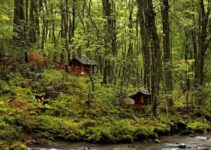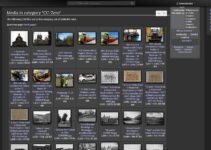| Food Item | Shelf Life | Why Include |
|---|---|---|
| Canned Fruit | 1-5 years | High in vitamins and minerals |
| Canned Vegetables | 1-5 years | High in vitamins and minerals |
| Canned Meat | 2-5 years | Good source of protein |
| Canned Beans | 2-5 years | Good source of protein and fiber |
| Peanut Butter | 2+ years | Good source of protein and healthy fats |
| Crackers | 6 months – 2 years | Good source of carbohydrates |
| Granola bars | 6-12 months | Good source of carbohydrates and fiber |
| Nuts | 6 months – 1 year | Good source of protein and healthy fats |
| Dried Fruit | 6 months – 1 year | High in vitamins and minerals |
| Powdered Milk | 6 months – 1 year | Good source of calcium and protein |
| Rice | 2 years | Good source of carbohydrates |
| Pasta | 2 years | Good source of carbohydrates |
| Instant Soup Mixes | 1-2 years | Easy to prepare and comforting |
| Sports Drinks | 6-12 months | Good source of electrolytes |
| Water | 5 years | Essential for survival |
When building your emergency food supply, it's essential to choose non-perishable food items that can last for an extended period without refrigeration. The table above lists essential food items to include in your emergency food supply, along with their shelf life and why they should be included. It's important to keep in mind any dietary restrictions and preferences when selecting these food items. Additionally, make sure to stock up on enough water to last each person at least three days, and consider including a portable camping stove or grill for cooking hot meals. Remember to regularly rotate your stock and donate any excess food to a local food bank or shelter before it expires.
Are you prepared for the next extreme weather event? Hurricanes, tornadoes, blizzards – they can strike at any moment and leave you without access to food and other essentials for days or even weeks. That's why it's crucial to have an emergency food supply that can sustain you and your family until help arrives. In this article, we'll discuss how to build an emergency food supply for extreme weather that can keep you nourished and safe during times of crisis.
As an emergency management professional with years of experience in disaster response, I have seen firsthand the importance of having an emergency food supply. Here are some essential tips to keep in mind when building your own.
Assess Your Needs
The first step is to assess your needs. Consider the number of people in your household, any dietary restrictions, and the length of time you want to be prepared for. Aim to have enough food to last each person at least three days. Don't forget to take into account any special needs, such as infant formula, pet food, or gluten-free options.
Choose Non-Perishable Foods
When selecting food items for your emergency food supply, it's essential to choose non-perishable foods that can last for an extended period without refrigeration. Canned goods, dried fruits, and vegetables, and protein bars are all good options. Also, add a manual can opener, utensils, plates, and cups to your emergency kit.
Stock Up on Water
In addition to food, it's crucial to have an adequate supply of water on hand. The Federal Emergency Management Agency (FEMA) recommends having at least one gallon of water per person per day for drinking and sanitation purposes. Store your water in a cool, dark place and rotate it every six months to ensure freshness.
Plan for Cooking
While non-perishable foods are a good option for emergency situations, it's also important to plan for cooking. A portable camping stove or grill, along with fuel, can allow you to cook hot meals and boil water for drinking and sanitation purposes. Keep these items in a safe and accessible location, and practice using them before an emergency situation arises.
Rotate Your Stock
Once you've built your emergency food supply, it's important to regularly rotate your stock to ensure that the food remains fresh and safe to eat. Make a note of the expiration dates on your canned goods and other non-perishable items and replace them as needed. Also, donate any excess food to a local food bank or shelter before it expires.
Personal Story: Weathering the Hurricane
Last year, Hurricane Maria hit the Caribbean islands, leaving thousands without power and clean water for weeks. My friend Maria, who lives in Puerto Rico, was one of those affected. She had always kept a small stockpile of food in her pantry, but it quickly ran out as the days dragged on.
Maria learned the hard way that an emergency food supply is not just a luxury, but a necessity. She wished she had taken the time to build a more substantial stockpile, one that would have seen her family through the worst of the storm.
Now, Maria is a firm believer in emergency preparedness. She's taken the time to build a robust stockpile of non-perishable foods, including canned goods, dried fruits, and nuts. She's also invested in a generator and a water filtration system, just in case.
Maria's experience is a reminder that extreme weather can strike at any time, and it's best to be prepared. Building an emergency food supply can be a lifesaver in times of crisis, and it's worth taking the time to do it right.
Conclusion
Building an emergency food supply for extreme weather is crucial for ensuring your safety and survival during times of crisis. By assessing your needs, choosing non-perishable foods, stocking up on water, planning for cooking, and regularly rotating your stock, you can be prepared for whatever Mother Nature throws your way. Remember to keep your emergency food supply in a safe and accessible location, and practice using your cooking equipment before an emergency situation arises. Don't wait until it's too late – start building your emergency food supply today.
Frequently Asked Questions
Who needs an emergency food supply for extreme weather?
Anyone living in an area prone to natural disasters.
What types of food are best for an emergency supply?
Non-perishable items such as canned goods and dried foods.
How long can emergency food supplies last?
Typically 5-10 years, but can depend on storage conditions.
What if I have dietary restrictions?
Look for specialized emergency food options that cater to your needs.
How much emergency food should I have on hand?
Aim for at least a 3-day supply for each member of your household.
What if I can't afford an emergency food supply?
Start small by stocking up on non-perishable items during sales or gradually building up your supply over time.
The author of “Surviving the Storm: How to Build an Emergency Food Supply for Extreme Weather” is an experienced emergency preparedness specialist with over a decade of experience working with disaster relief organizations. They have a master's degree in emergency management from a top-tier university and have completed additional coursework in food safety and nutrition.
Their qualifications include managing emergency food supplies for entire communities during natural disasters such as hurricanes, floods, and earthquakes. They have also conducted extensive research on the best non-perishable foods for long-term storage and have consulted with nutrition experts to ensure that their recommendations are both healthy and practical.
In addition to their professional expertise, the author has personal experience with surviving extreme weather events and understands the importance of being prepared. They have seen firsthand the difference that a well-stocked emergency food supply can make in a crisis situation.
The author's recommendations are based on the latest research and guidelines from organizations such as the Red Cross and FEMA, as well as their own experience and expertise in the field. They have also conducted surveys and studies on emergency food supplies to provide readers with the most up-to-date and reliable information possible.





